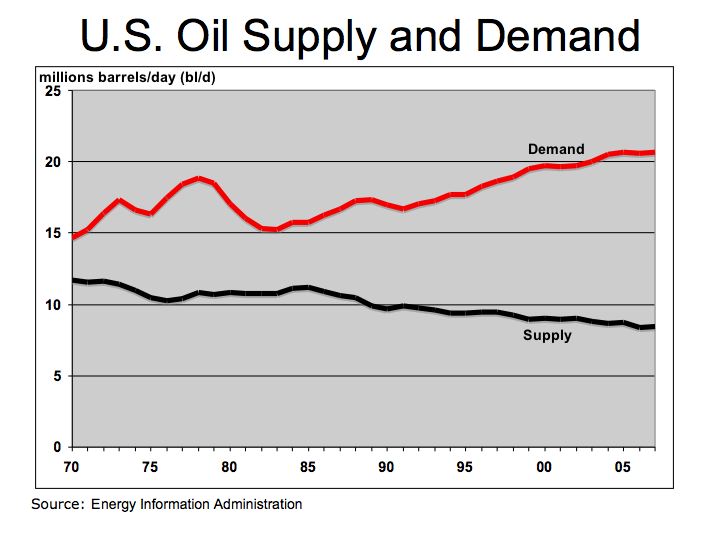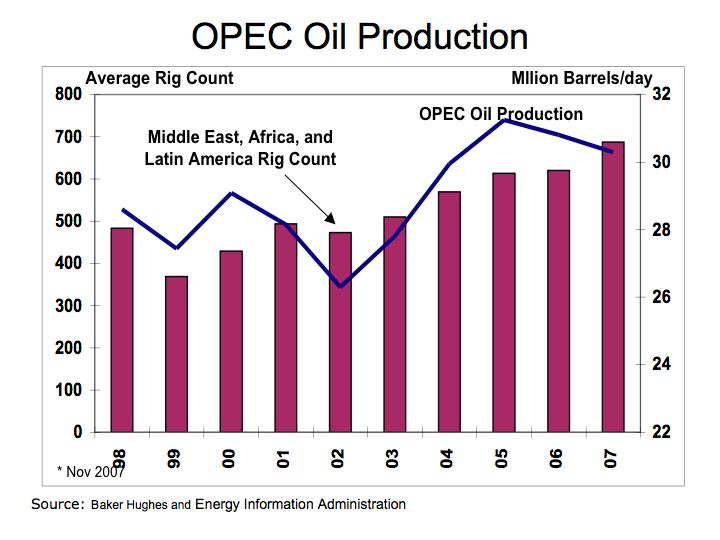Blame high food and energy prices on the White House
With the infinite wisdom of the White House and U.S. Congress, food prices are now directly tied to the price oil. The price of corn-based ethanol is now determined by the price of gasoline that it substitutes in motor vehicles and that price is established by supply and demand for oil. The price of gasoline at your local gas station or convenience store is based on the price of oil. And now that the price of corn is rising because it is tied directly to oil, the price of other grains and subsequently, prices along the entire food chain are rising.
Corn Prices have increased 166% since 2005. The rising price of corn that is used to produce corn ethanol is causing farmers to direct their limited resources to grow more corn, which means other grains such as wheat or soy become scarce and their prices rise. The growing scarcity of grains for food products is raising price across the food chain. Developing a renewable energy solutions based on diverting food as a substitute for expensive gasoline forces food supplies to become scare and expensive.
It is the supply and demand for gasoline and diesel fuels that establishes the price at the pump. When corn ethanol is substituted for gasoline, prices tend to gravitate towards a mean price that continues to rise to keep pace with the escalating price of crude oil now over $110 per barrel. Corn prices are inextricably linked to oil prices and in turn; corn prices impact other grain prices that means it cost more to feed your family or to feed livestock and forces those prices higher.
The rise in corn prices is illustrated in Figure 1.
Figure 1 Corn Prices

Irrespective of the timing of Peak Oil, a long-term energy strategy is required. The days of cheap oil are over. Remember how oil production in Alaska helped ease the U.S demand for foreign oil a couple of decades ago. Oil production in Alaska declined by nearly 75 percent from its peak in 1987 according a Washington Post article back in 2005. In November 2007, the Petroleum News indicated production in Alaska is expected to decline further in the future. The U.S. depends on oil production in the Gulf of Mexico for about 25% of our supply, according to the Department of Energy which is why the impact from Hurricane Katrina was so devastating.
Diminishing supply and rising demand suggests oil prices should continue to remain elevated. The rising motor vehicle usage in China (China Motor Vehicle Registration)
and India continues to influence the demand for oil.
Figure 2 Vehicle Registrations in China

Figure 2 and Figure 3 illustrate the rising use of motor vehicles in developing countries. This trends should continue and in turn, increase the demand for oil.
Figure 3 Automobile Sales in India

Maybe we should look to some leading countries in the development of alternative energy strategies. Perhaps we can learn from Norway’s HyNor Project. Solar photovoltaic projects being lead by Germany
and Spain.
So the next time you fill your tank or when you’re at your local food store and find that your wages don’t quite cover your food bill, ask your local Congressional representative for better planning on alternative energy strategies and solutions. Investment and research into solar, wind, electric vehicles, and hydrogen energy could provide real solutions by addressing energy needs, climate concerns, the environment, and food prices.


